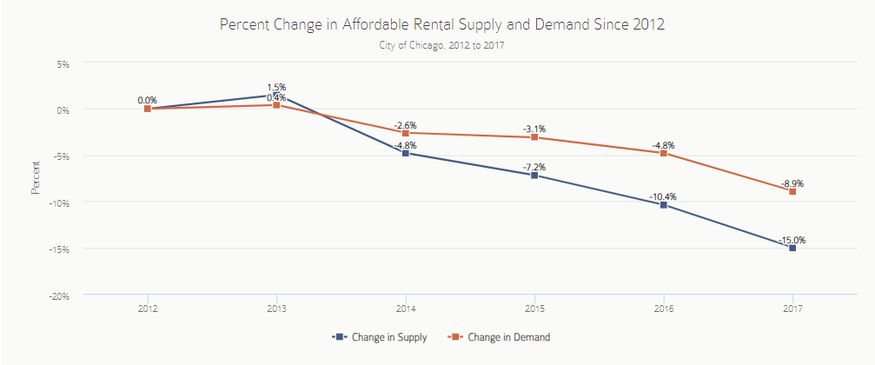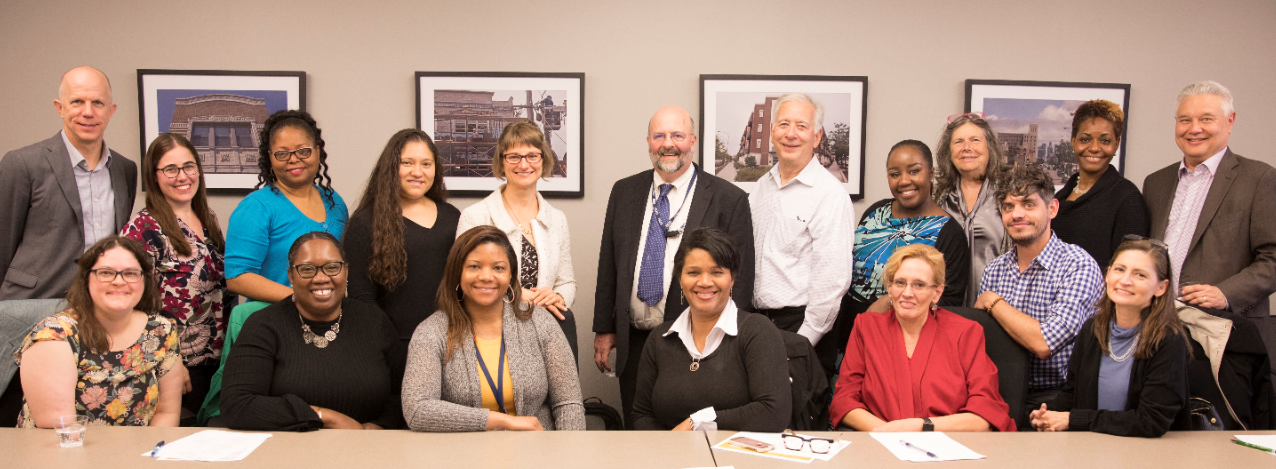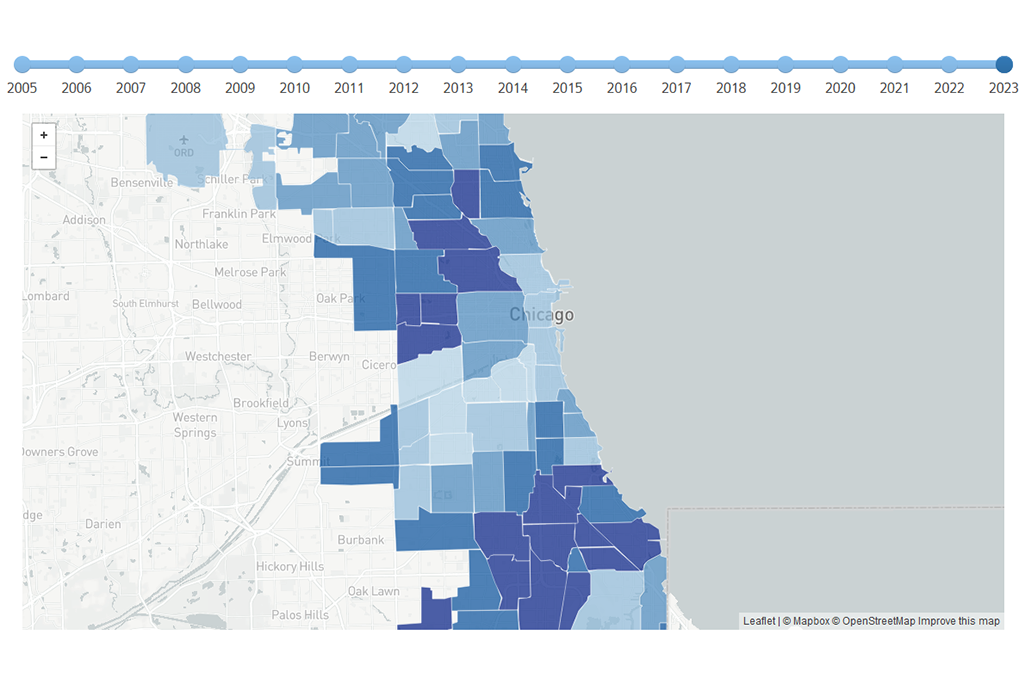The Preservation Compact has implemented a range of creative solutions to bring down housing costs and maintain rental affordability across Cook County. One of their most successful initiatives, the Interagency Council, recently celebrated 10 years of efforts and an organizational milestone of securing over 6,200 affordable rentals against deterioration or conversion to market rates. Given the value of these deeply subsidized properties, the preservation of this number of rentals is significant.
The Disappearance of Affordable Housing and Impact of Cost Burdens
Preserving affordable rental housing is more necessary than ever. Regional and national studies have recognized the troubling loss of affordable units in many U.S. metropolitan areas. IHS’s 2019 State of Rental Report documents an ongoing loss of affordable housing supply in Cook County from 2013 to 2017, using the most current data available from the U.S. Census. The report estimates that roughly 45,000 affordable rental units were lost in that time span. Even as demand for affordable units has declined since 2013, the rapid loss of affordable units has declined at a quicker rate. This trend has maintained a historically high number of low-income households living in unaffordable housing.

Despite economic improvements, many households continue to struggle with housing costs, especially households with low or moderate incomes. IHS’s 2019 State of Rental Report found that in 2017, 87.8 percent of renters earning less than 30 percent AMI were rent burdened, with 74.8 percent paying more than half of their income to housing costs. Even among households earning 50 to 80 percent AMI, nearly half were rent burdened with 47.5 percent paying more than 30 percent of their income in rental expenses.
Government-Assisted Units as Affordable Housing
The Preservation Compact, launched in 2007 by the MacArthur Foundation, has lead the way in preserving properties that provide forms of affordable housing. They have created a variety of initiatives focused on saving existing affordable rentals and providing relief and assistance, so property owners can maintain their buildings and continue to provide housing at affordable rates. The Compact’s Interagency Council initiative has specialized in the preservation of a staple of affordable housing: government-assisted units. The focus is primarily on Project-Based Section 8 properties given the value of those subsidy contracts.
Project-based Section 8 is valuable for retaining affordability of a specific apartment for the duration of a contract. When located in high-income areas, these units are even more valuable for providing long-term affordability in areas where affordability is the greatest challenge. High-cost areas are experiencing the largest drop in the share of their rental housing that is affordable. Some high-cost submarkets on Chicago’s North Side have seen the share of rental units that are affordable decrease by over 10 percentage points over our study period, as shown on the map below. Preserving Project-Based Section 8 units, especially in high-cost areas, is critical to allowing lower-income households to live in areas with greater economic opportunity.
Despite their government subsidy, government-assisted units are at risk of being lost through conversion to market-rate units as contracts end or through deterioration as a lack of investment leads to poor living conditions. Exacerbating this risk is the reality that government agencies may not have an early warning system to identify vulnerable properties. Even if agencies do identify problems in advance, they may not have the lines of communication in place to coordinate preservation strategies with other government agencies in time to protect the units.
Innovation and Collaboration: The Preservation Compact’s Interagency Council
The Preservation Compact addressed these risk factors through the creation of an organized group of key stakeholders known as the Interagency Council whose members include leaders from the U.S. Department of Housing and Urban Development (HUD), Illinois Housing Development Authority, Cook County, City of Chicago, and Chicago Housing Authority, and tenant advocates. The partnership between the various leaders encourages regular communication about potential vulnerable properties and efforts to implement strategies for preservation that might not happen without the Interagency Council forum. This strategy allows the groups to work more quickly and efficiently than working on their own.
The Interagency Council’s focus on communication and collaboration has proven immensely successful. The group recently celebrated 10 years of service and the preservation of 6,200 units of affordable housing from deterioration, market conversion, or other means of shifting to unaffordability.
The Preservation Compact Interagency Council partners recently preserved 110 affordable units in a strong suburban market. When the owner declined to renew the Project-Based Section 8 contract, low-income families faced displacement out of a thriving suburb of Chicago, with 110 project-based units at risk of permanent loss.
Chicago’s HUD office had already pioneered use of HUD’s 8bb program, which allows the transfer of project-based funding to new locations. The trick is in coordinating the match: finding a new site that offers similar opportunities, and persuading the current owner to participate in the transfer process.
Enter The Preservation Compact and the Interagency Council. The Compact identified and approached an owner interested in an 8bb transfer in a neighboring suburb. Once both owners were on board, government partners supported the effort, and tenant advocacy partners effectively pressed all sides to ensure tenants benefitted from a smooth transfer process. Advocates, HUD, the Housing Authority of Cook County, and both owners worked hand-in-hand to move the 8bb transfer forward, preserving this valuable contract in one of the strongest regions in the Chicago metropolitan area.
IHS congratulates The Preservation Compact and the Interagency Council on 10 years of vital work to preserve existing affordable housing in Cook County. During a time when affordable units are being lost at a rapid rate, they have been innovative and collaborative in their dedication to protecting and maintaining affordability.






